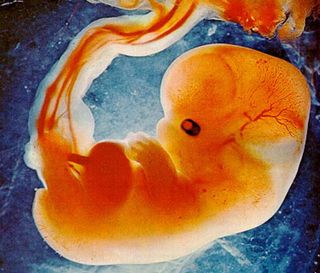Boy or Girl: Which Gender Baby Would You Pick?

When given the opportunity to choose the sex of their baby, women are just as likely to choose pink socks as blue, a new study shows.
"Sex selection is a topic that's almost taboo for physicians to talk about," said Tarun Jain, a reproductive specialist at the University of Illinois, Chicago. "Yet, it's important to understand patient interest in non-medical sex selection and adequately address the ethical and social implications before the cat is out of the bag. Prior to this study, there has been no data to indicate what the demand might be."
Of the 561 women who participated in the study, 229 said they would like to choose the sex of a future child. Among these 229 there was no greater for demand for boys or girls. [Americans Like Baby Boys Best]
However, the data showed that women who already had one or more children of one sex would prefer for their next child to be of the opposite sex to create gender balance within the family.
The findings are published in the March issue of Fertility and Sterility.
Selecting for sex
There are two methods of sex selection being used in the United States today.
Sign up for the Live Science daily newsletter now
Get the world’s most fascinating discoveries delivered straight to your inbox.
One is sperm separation - the concept being that sperm with an X chromosome (for girls) weigh a little more than sperm with a Y chromosome (for boys). Because of this slight difference, the sperm can be sorted out and prepared for a simple insemination procedure.
Sex selection by sperm separation has a success rate of about 90 percent for girls and about 70 percent for boys. [Read: Babies in Frontier States Have More Unusual Names]
The other common method is pre-implantation genetic diagnosis, or PGD, which is a form of in vitro fertilization, where embryos are prepared in a test tube before implantation in a woman's uterus. Unlike traditional in vitro fertilization, doctors take a few cells from each prepared PGD embryo to determine its sex, and they only implant embryos of the desired sexes.
This method has a success rate of nearly 100 percent, but is more expensive and much more physically intrusive for a woman compared to sperm separation, researchers say. Neither method will cause any harm to the developing baby, they say.
"In our study, patients were about equal on which procedure they would prefer," Jian told LiveScience. "PGD is tougher, but maybe patients don't want that slight uncertainty that comes with sperm separation."
Banned in UK
Sex selection for non-medical reasons is banned in the United Kingdom - a decision that was favored by 80 percent of the population - but there are currently no laws to stop American parents-to-be from employing the technology.
The President's Council on Bioethics keeps a record of the ethical aspects of sex selection for non-medical purposes, but it has not issued an opinion. Early concerns are that gender balances will be altered and that, in the case of PGD, human embryos will be wasted.
"One of the main fears is that it may propagate gender stereotypes," said Jian. "Primarily that there would be a greater desire for a male child."
However, in Jian's study there was "no stronger preference for boys or girls." Even women with no children were split down the middle, showing equal preference for boys and girls.
The American Society for Reproductive Medicine is no longer concerned that society will create an artificial gender imbalance and approves of sperm separation as a method for gender balancing within a family. While the society believes PGD to be safe, it is also concerned about the discarding of unwanted human embryos and has backed away from its earlier support of this method.
Jian hopes that his study will bring the topic of sex selection more into the public eye. He suggests it is important for infertility clinics and society to determine what acceptable uses of non-medical sex selection are as these technologies become more and more mainstream.

